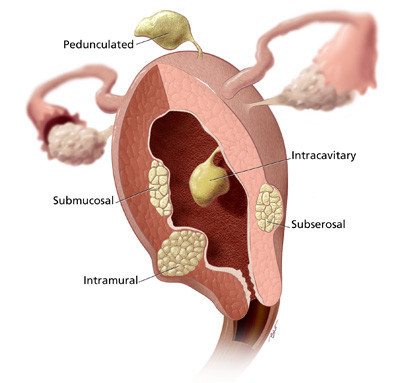What Are Fibroids?
A uterine fibroid is a common type of benign (non-cancerous) tumor that develops within the uterine wall. Uterine fibroids occur in up to one third of all women and are the leading reason for hysterectomy (removal of the uterus) in the United States. One in five women older than 35 years has a uterine fibroid. An estimated 600,000 hysterectomies are performed in the United States annually, and at least one third are for fibroids.
Uterine fibroids may grow as a single tumor or in clusters. They often increase in size and frequency with age, but then revert in size after menopause. While not all women with fibroids experience symptoms, symptoms may include excessive menstrual bleeding, pelvic pain and infertility. The size, shape, and location of fibroids can vary greatly. They may be present inside the uterus, on its outer surface or within its wall, or attached to it by a stem-like structure.

Fibroids can range in size from small, pea-sized growths to large, round ones that may be more than 5-6 inches wide. As they grow, they can distort the inside as well as the outside of the uterus. Sometimes fibroids grow large enough to completely fill the pelvis or abdomen.
A woman may have only one fibroid or many of varying sizes. Whether fibroids will occur singly or in groups is hard to predict. They may remain very small for a long time, suddenly grow rapidly, or grow slowly over a number of years. Uterine fibroids are growths that develop from the muscle tissue of the uterus. They also are called leiomyomas or myomas.
The size, shape, and location of fibroids can vary greatly. They may be present inside the uterus, on its outer surface or within its wall, or attached to it by a stem-like structure.
There are numerous fibroid treatment options. Many factors go into determining which is right for you. View a summary of treatment options here.
